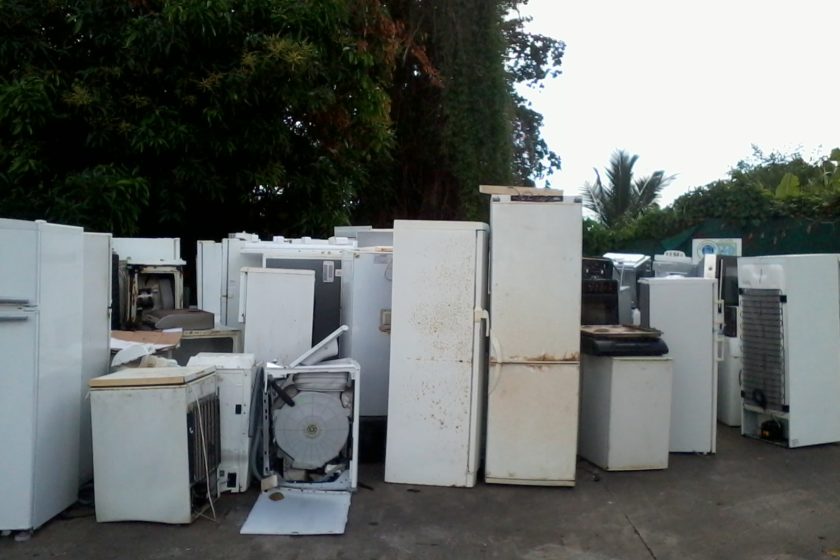Alongside the 8 th edition of the Journées to low-carbon (JFEC) and the 35 th International Day of Protection of the Ozone Layer, the Ministry for the Environment hosted a panel Friday, September 18 2020, in Ouagadougou. Four themes, revolving around “energy efficiency and reduction of greenhouse gas emissions”, were then the subject of communications.
This panel aimed to equip citizens on carbon emissions and emission sectors, but also to provide them with advice on how to reduce it. To achieve such an objective, the Ministry of the Environment had to seek the participation and intervention of its partners, in particular the National Agency for Renewable Energies and Energy Efficiency (ANEREE), the National Center for sustainable development (CNDD), the Association of Refrigeration and Air Conditioning Professionals and the Burkinabè National Hydrocarbons Company (SONABHY).
The National Center for Sustainable Development (CNDD) has thus set about animating the theme “inventory of greenhouse gas emissions in Burkina Faso”. In her presentation, Marthe Baro / Ky from the Department for the Coordination of International Conventions / SP-CNDD, returned on the one hand to the main greenhouse gases (GHGs), which act on the ozone layer ( carbon (CO2), methane (CH4), nitrous oxide (N2O) and hydrofluorocarbons (HFCs)) and on the other hand, on the GHG emitting sectors such as energy through land transport, electricity generation and waste through the treatment of wastewater and solid waste.
In terms of data, energy rose from 640.14 gigatonnes of carbon in 1995 to 3,146.63 gigatons in 2015, ie an increase of 392% over the period and an increase of 7.9% per year; which suggests a forecast of 9 813.54 gigatonnes by 2030. As for waste, in 1995, carbon production was estimated at 777.50 gigatonnes; in 2015 it rose to 1,461.69 gigatonnes with a forecast of 2,294.44 gigatonnes in 2030, ie an evolving rate of 3.1% for the year and 88% for the period 1995 – 2015. National production was estimated at 24 094.68 in 1995, to 40,134.38 gigatonnes in 2015, with an evolution rate of 66% during the period and 2.5% the year. Production in 2030 is forecast to be 57,782.85 gigatonnes.
After the CNDD, the National Agency for Renewable Energies and Energy Efficiency (ANEREE) also developed a theme in the context of renewable energies: « energy efficiency in the context of the explosion of energy demand in Burkina Faso ”. For ANEREE, reducing GHGs lies in investing in renewable energies. In the opinion of Reymond Yaogho, works engineer in electrical engineering in service at ANEREE, the advantages of renewable energies, namely the saving of natural resources, the reduction of GHGs are enormous for the environment, and could also be a brake on global warming.
Through the theme: « energy efficiency in refrigeration for the reduction of GHG emissions », Francis Semporé of the association of refrigeration and air conditioning professionals, also made the case of the causes of the production of GHGs in the field of cold and air conditioning. For the association, the GHG emissions due to the electricity consumption of refrigeration devices is estimated at 102.1 Gwh, or 71,470 tonnes of carbon in 2019 in Burkina Faso. Choice of devices and equipment; constructive provisions; systems and facility designs; the provisions for the execution of works and installations; operation and maintenance… would be at the origin of the production of Carbonne in the refrigeration sector.
Yannick Dao, Head of the Petroleum Products Quality Control Laboratory at SONABHY, for his part, returned to the types of exhaust gas emissions through the sub-theme: « fuel quality and types of exhaust gases from motor vehicles in Burkina Faso ”. It indicates to this effect that the exact nature of the exhaust gas depends on many factors such as the type of engine, the quality of engine maintenance, the type of fuel used, the speed and load imposed on the engine and the systems. emission control. For Roger Dao, Chemist-Qualiticien and head of the Petroleum Products Quality Control Laboratory, diesel engine exhaust gas can contain elements such as carbon (soot), carbon monoxide, carbon dioxide, oxygen, water vapor, nitrogen,
Tiba Kassamse Ouédraogo (intern)
Latribunedufaso.net




